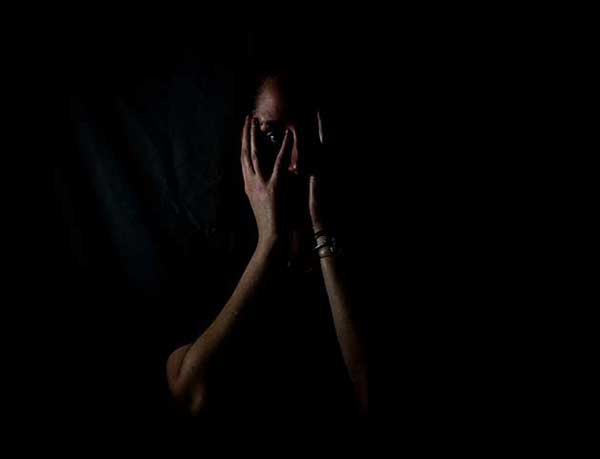What is mpox and why has WHO declared it a global health emergency? | Health News
For the second time since 2022, mpox has been declared a global health emergency as the virus spreads rapidly across the African continent and risks entering other continents.
The World Health Organization (WHO) on Wednesday issued its highest level of alert for the viral disease, noting that more than 14,000 cases and 524 deaths in Africa this year have already exceeded last year’s figures.
The announcement came a day after the Centers for Disease Control and Prevention (CDC) in Africa declared mpox a public health emergency.
So what is mpox, how is it transmitted, and how serious is its current spread compared with previous outbreaks?
Here’s what you should know:
What is mpox?
It belongs to the group of viruses classified as “Orthopoxvirus genus”. These typically cause pox-like disease, which includes a rash with raised bumps or blisters on the skin. The bumps are often filled with fluid or pus and can eventually crust over and heal.
Mpox is similar to the now eradicated smallpox, and and other poxviruses like cowpox and vaccinia.
It was originally named “monkeypox” when first identified in monkeys in 1958. These captive research monkeys were in Denmark at the time. In 1970, the first reported human case was a nine-month-old boy in the Democratic Republic of Congo.
In 2022, the WHO recommended updating its name to “mpox” to reduce stigma and association with monkeys, as the disease can also infect rodents and humans.
How is mpox virus transmitted?
The mpox virus is transmitted to humans through close contact with an infected animal or person.
Animal-to-human transmission typically occurs through bites, scratches, or direct contact with the blood, body fluids, or wounds of an infected animal.
Human-to-human transmission can happen through:
- Direct contact with skin lesions, body fluids, or respiratory droplets of an infected person.
- Prolonged face-to-face contact with an infected person.
- Touching contaminated objects, such as bedding or clothing that have been in contact with the infectious material, although this is a rare mode of transmission.
The virus enters the body through broken skin, the respiratory tract, or mucous membranes (which include eyes, nose, and mouth).
What are the mpox symptoms?
Symptoms include fever, headache, muscle aches, and a distinctive rash that can appear on the face, hands, feet, and other parts of the body. The rash eventually forms pustules and scabs before healing.
A pustule – which looks like a big white or yellow pimple – is a small, raised bump on the skin that is filled with pus.
Lymph nodes, bean-shaped glands that are part of the immune system, can also swell up as they try to fight the virus. Some of the places these are located include under each arm, and the sides and back of the neck.
In rare cases, an infection may be deadly.
Overall, an infection can last two to four weeks. It can take three to 21 days to develop symptoms after being exposed to the virus. However, a person can transmit the disease to others one to four days before symptoms appear.
Mpox can be identified by testing a sample of fluid swabbed from the rash.
Why has mpox been declared a global emergency?
On Wednesday, the WHO declared mpox a public health emergency of international concern (PHEIC) – its highest level of alert due to a new variant of mpox being found and cases being reported for the first time in several countries, such as Kenya and Rwanda.
WHO Director-General Tedros Adhanom Ghebreyesus said there was concern for the further spread of the disease within Africa and beyond, after after a meeting of the United Nations health agency’s emergency committee.
An emergency declaration from the WHO is meant to spur donor agencies and countries into action.
“There is a real attempt right now to mobilise resources and that is why in part WHO called for the public health emergency now,” said Amita Gupta, director of the Division of Infectious Diseases at the Johns Hopkins School of Medicine.
The WHO declared mpox a global health emergency in July 2022 as well, when the virus was first found to spread through sexual contact and was reported in more than 70 countries across the world. Once cases declined, the WHO lifted the emergency status in May 2023.
Today, the Emergency Committee on #mpox met and advised me that in its view, the situation constitutes a public health emergency of international concern. I have accepted that advice.@WHO is on the ground, working with the affected countries, and others at risk, through our…
— Tedros Adhanom Ghebreyesus (@DrTedros) August 14, 2024
Where has mpox spread?
Last week, the Africa CDC reported that mpox has now been detected in at least 13 African countries. Compared with the same period last year, the agency said cases are up 160 percent and deaths have increased by 19 percent.
So far, more than 96 percent of cases have been reported in Congo, where earlier this year scientists found a new form of the virus that causes milder symptoms and lesions on the genitals. That makes it harder to spot, meaning people might transmit it to others without knowing they’re infected.
“There is not much international mobility in/out of the DRC so the risk of spread has been low. However, if the spread goes more widely in Africa then the risk of more global spread becomes a concern,” Gupta told Al Jazeera.
While the 2022 outbreak was driven by clade (or group) II of mpox, the current outbreak is being fueled by clade I which can be more deadly, Otim Patrick Ramadan, Health Emergency Office at WHO regional office for Africa, told Al Jazeera.
Cases of the new clade I variant outbreak have not yet been reported outside Africa.
Is there a vaccination against it?
While mild cases can resolve on their own, there are no approved treatments or vaccines specifically for mpox.
The antiviral drug tecovirimat (TPOXX), originally for smallpox, is being studied for treating mpox. The United States Food and Drug Administration has also approved JYNNEOS (also known as Imvamune or Imvanex), a smallpox vaccine for severe mpox cases in people aged 18 years and older.
However, some 60 percent of the cases in Congo, the country most overwhelmed by mpox are in people aged below 18, according to Ramadan.
The CDC has recommended getting vaccinated and isolating once exposed to someone with mpox.
Gupta said that while “much has been learned from COVID” and surveillance capacity across the world has increased, rapid diagnosis and access to substitute treatments is lacking in African countries where the virus is spreading.
Check out our Latest News and Follow us at Facebook
Original Source






